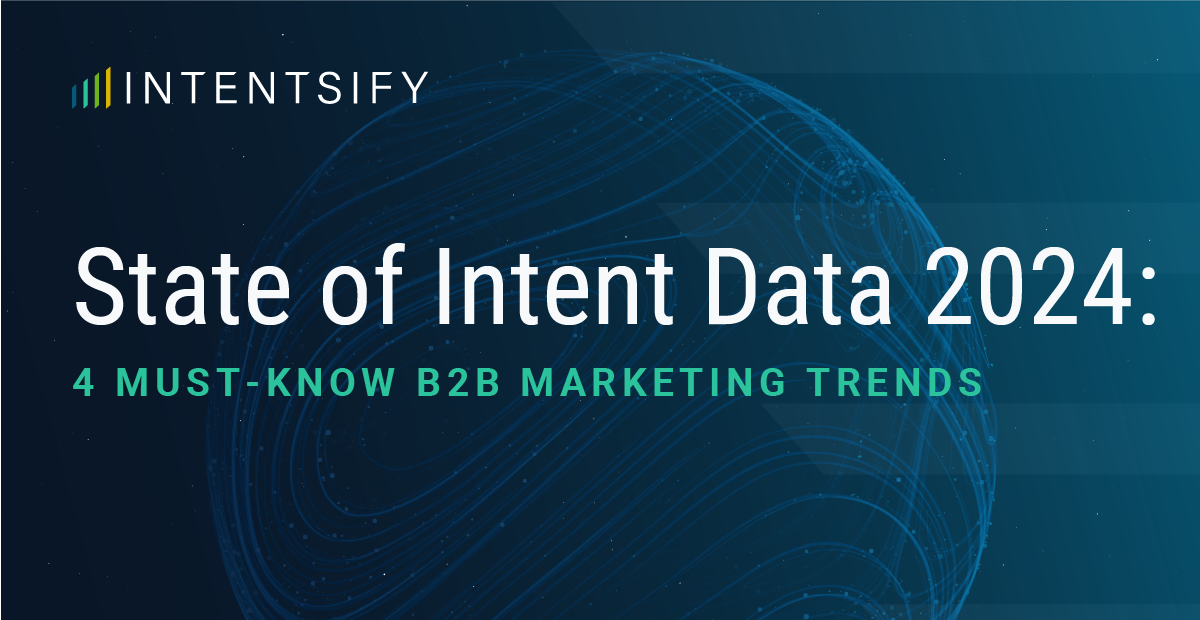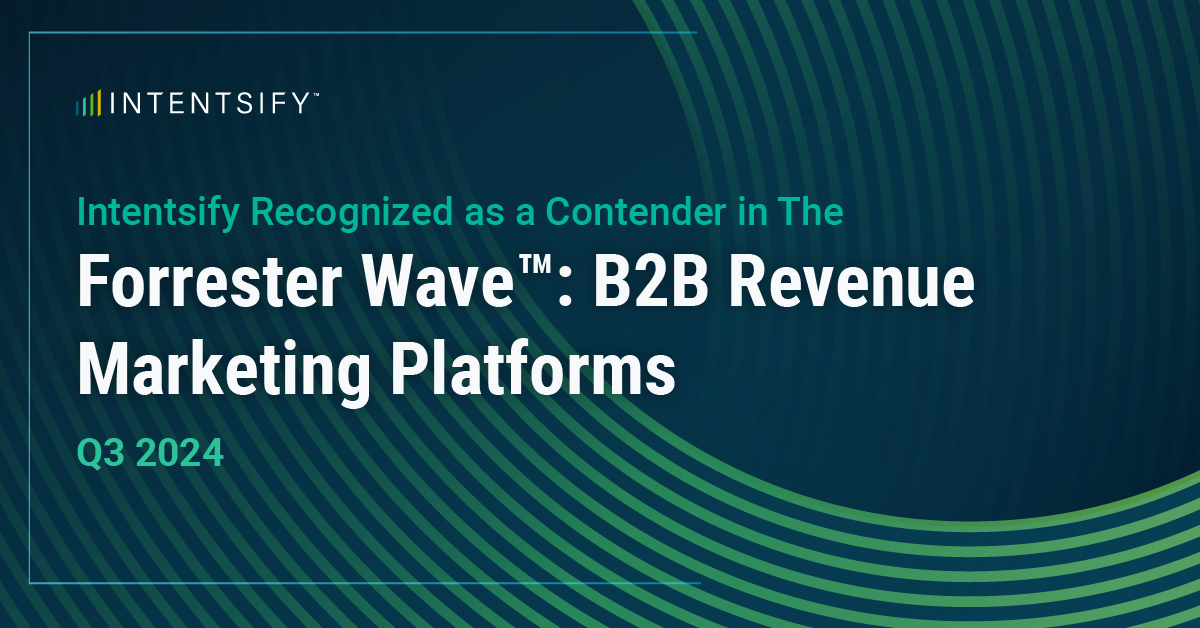Any B2B marketer today must be data-driven. It’s a necessity to do the job well.
A handful of years ago, certain marketing roles might be able get away with leaving the numbers to more analytical marketing roles, such as marketing operations or digital advertising management. But that’s no longer the case.
More data than ever is available to us marketers. And it informs every aspect of B2B marketing, from demand generation to field marketing, and content creation to product marketing.
Of course, each sub-discipline uses various types of data to differing degrees. More and more, however, intent data is supporting use cases throughout the buyer journey and beyond. And the ability of marketers—spanning the entire gamut of roles—to effectively implement intent data, interpret the resulting insights, and put those insights into action is increasingly dictating the success of their initiatives.
Here are just some ways B2B marketers are leveraging intent data to achieve greater success.
1. Honing Your Ideal Customer Profile (ICP)
We often think a certain type of company would be the best fit for our products/services. And we try to find data points that fit our preconceived notion of what a “good fit” looks like, which skews our go-to-market efforts—including value propositions, messaging, content creation and distribution, engagement tactics, etc.
Intent data can help marketers uncover segments of the industry we didn’t even think would be a good fit for our products/services. This is especially beneficial for marketing leadership and product marketing roles.
By tracking specific intent topics and/or keywords customized to the strengths of your organization, and your competitors’ brands and solutions, you can uncover prospective target accounts with characteristics that you never would’ve thought to include in your ICP.
With these new insights, you can hone your ICP into a more effective targeting tool. This will then lead to greater efficiency and efficacy throughout the entire buy-cycle, and in turn, more customers and revenue.
2. Improving Account Prioritization and Scoring
Intent data enables marketing organizations to quickly prioritize the right target accounts to focus on based on actual data showing accounts’ latest research behaviors. Demand generation and digital advertising teams can then focus media budget to those accounts to boost return on investment (ROI) and conversion rates.
At the same time, marketing operations teams can use intent insights to inform account- and lead -scoring models. For example, if a prospective account is spiking on keywords or topics specific to your brand or products, they’re likely pretty deep into their buying journey which indicates that they should be given a higher score. Using intent in this way will further increase conversion rates—as well as velocity down the demand funnel.
In addition to informing account-scoring models, intent data facilitates business-development efforts, which are increasingly directed by the marketing function. By analyzing changes in research activity via third-party intent providers alongside your first-party intent data (e.g., website activity), business-development representatives (BDRs) can leverage intent data to further hone in on companies actively researching your solution, while also selecting the right follow-up messaging to use.
3. Bolstering Your Content and Messaging Strategy
There’s a lot of content out there—60% of marketers create at least one piece of content each day, according to eMarketer. It’s difficult to stand out due to the overwhelming amount of content continuously being created and distributed.
Intent data can help you break through the noise and build your brand’s online presence more effectively. It lets you know which information prospects need and when by revealing helpful insights into their challenges, needs, and concerns.
When used correctly, the tool can be highly beneficial for content marketing teams, informing content development and distribution efforts at every stage of the buyer journey.
If a large percentage of your target accounts is actively researching topics focused on a specific pain point your product solves for, you can prioritize your messages accordingly. Once prospects begin to understand the challenges they need to address, you can drill down into the various solutions available to them (often via “how to” content). As they move further along the buyer journey, you can track specific product categories and product names to personalize your content even more.
4. Guiding Third-Party Demand Generation Efforts
The ultimate goal of demand generation programs is to develop relationships with ICP-fitting prospects and nurture them into valuable sales opportunities. Launching third-party demand gen programs (e.g., content syndication) is often a key, initial effort in developing those relationships.
Intent data greatly informs content syndication strategies. Rather than letting media partners generate any leads matching your ICP, intent signals can dictate which accounts media partners target and acquire lead data from. This increases the chances that the leads you buy are among companies in an active buy cycle.
Further, you can then analyze accounts’ research activities—as seen in the intent data—to better determine which nurture paths and follow-up messaging to use with each account. This last point is key. Since third-party leads (even those from intent-identified accounts) haven’t engaged with your brand as much as your content, they’re typically far earlier in their buyer journey and require more nurturing than inbound leads.
5. Stretching Digital Advertising Budget
We know all too well how quickly digital marketing teams can burn through their advertising budget. Intent data can help improve digital-ad campaign performance by ensuring impressions are served to intent-identified accounts in the right locations. Intentsify’s Intent-Driven Display Advertising Program helps you do just that.
You can increase return on your advertising budget by using intent data to serve ads specifically to companies (and specific office locations) that are already researching your product and/or service categories. You can also see which companies have viewed your ads, and weigh against their latest research activity to further prioritize accounts.
6. Planning High-Impact Events
In-person events might still be on hold. But when the time comes, intent data can create value here for demand gen and field marketing teams.
Using intent data, marketers can identify and plan events in locations comprising larger groupings of prospective accounts showing interest in your products/services. By pinpointing the right locations, you’ll see higher attendance rates and can initiate more meaningful conversations at the events.
Further, certain types of intent data identify the specific topics and keywords target accounts are actively researching. Marketing teams can use this information to further boost turnout by customizing emails, landing pages, and ads based on prospects’ topics of interest.
7. Understanding How Best To Help Current Customers
Preventing customer churn and expanding investments among current accounts is an underutilized intent data use case.
By monitoring the research activity of current accounts, intent data helps customer marketing, (and sales/customer success) teams identify which customers are most likely to churn, as well as those ripe for cross-sell.
For example, if the intent signals show one of your customers is actively researching your competitor with a similar offering, this is your queue to address any existing issues before it’s too late.
On the other hand, if the data shows certain customers researching solutions you offer (but they haven’t yet bought), you can reallocate resources to expand the account’s investment and increase its lifetime value. Therefore, not only does intent data boost the effectiveness of pre-sales efforts, it can also increase customer lifetime value (CLV) by both preventing churn and maximizing account investments. Perhaps more importantly, addressing customer issues early-on strengthens relationships and reflects positively on your overall brand.
Intent data is increasingly empowering marketing teams to make smarter, more data-driven decisions. With its wide span of use cases and undeniable value it brings to B2B organizations, it’s only a matter of time before intent data makes its way into every marketer’s toolbox.






